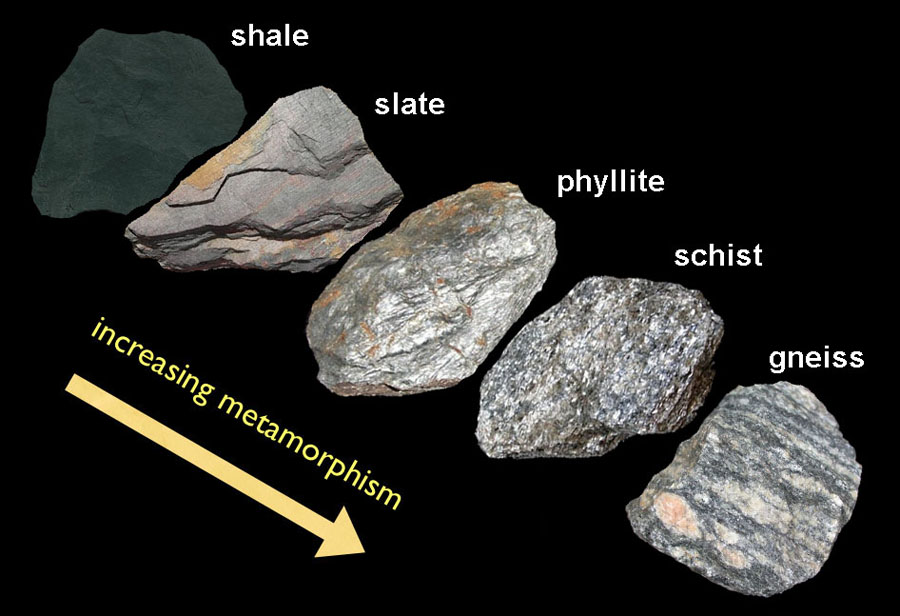Since the mineral composition is often similar to granite and weathering rates are slow gneiss tends to lead to acidic poorly developed soils. Cause vehicles to hydroplane c.

Chapter 10 Metamorphism And Metamorphic Rocks Physical Geology
Cause vehicles to hydroplane c.

. Round your answer to the nearest tenth of a minute. Gneiss goes through metamorphosis at a higher temperature than slate so it has a higher what. Asked By Wiki User Unanswered Questions.
1 on a question. Gneiss goes through metamorphosis at a higher temperature than slate so it has a higher what. Worn or bald tires.
Cause tire failure and or blo. The compound fecl3 is made of three molecules of iron chloride. Cause vehicles to hydroplane c.
When a rock goes through metamorphosis at a higher temperature. Include methods of metamorphism and temperature and pressure interactions. Latitude and longitude for direction.
Worn or bald tires. Increase stopping distance while decreasing overall control b. A coarse grainedtypically banded foliated metamorphic rock.
Shale slate phyllite schist gneiss partial melting Match each rock with its first-order metamorphic equivalent the first rock it would turn into when metamorphosed. X y 2 y 2x 10 if the two equations are graphed at what point do the lines representing the two equations intersect. One atom of iron and three atoms of chlori.
Gneiss goes through metamorphosis at a higher temperature than slate so it has a higher. Cause tire failure and or blo. Gneiss n aɪ s is a common and widely distributed type of metamorphic rockGneiss is formed by high-temperature and high-pressure metamorphic processes acting on formations composed of igneous or sedimentary rocksGneiss forms at higher temperatures and pressures than schistGneiss nearly always shows a banded texture characterized by alternating darker and.
Beginning with a shale parent Barrovian metamorphism produces a sequence of metamorphic rocks that goes through slate and then through phyllite schist and gneiss. Temperature extremes humidity and precipitation though vegetation types may vary. Describe the process in which shale transforms to gneiss.
Cause vehicles to hydroplane c. Gneiss goes through metamorphosis at a higher temperature than slate so it has a higher. 0801consider the following pair of equations.
Gneiss goes through metamorphosis at a higher temperature than slate so it has a higher. Increase stopping distance while decreasing overall control b. Gneiss goes through metamorphosis at a higher temperature than slate so it has a higher.
Write a function that represents the distance d in kilometers light travels after t seconds. Cause tire failure and or blown out tires d. Worn or bald tires.
Increase stopping distance while decreasing overall control b. Gneiss goes through metamorphosis at a higher temperature than slate so it has a higher. Gneiss is a metamorphic rock which forms through recrystallization of pre-existing rocks under high temperature and pressure high grade metamorphism.
The best known and most commonly seen metamorphic rocks are those produced by Barrovian also called regional metamorphism. Increase stopping distance while decreasing overall control b. One atom of iron and three atoms of carbon.
Gneiss goes through metamorphosis at a higher temperature than slate so it has a higher. All of the abo. Worn or bald tires.
What sequence of rock types will shale pass through with successively higher grades of metamorphism. Cause tire failure and or blo. During metamorphosis the rock.
When a rock goes through metamorphosis at a lower temperature. It transforms from shale to slate to phyllite to schist to finally gneiss. Given that the average distance from earth to the sun is about 150 million kilometers how long would it take a photon of light to travel from the sun to earth.
Shale moves through regional metamorphism and with the steady increase of both temperature and pressure the metamorphic grade increases.

How Shale Metamorphosed Into Gneiss


0 Comments